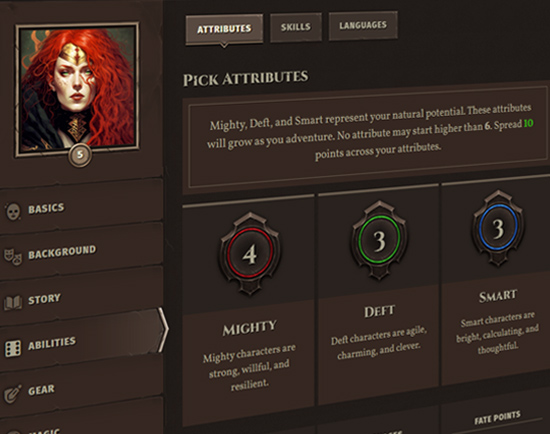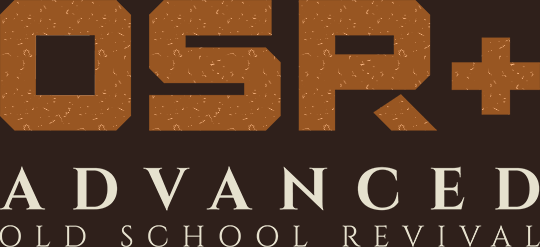Another source of harm in the game is minor, major, and fatal perils.
- Minor perils cause temporary status effects that go away on their own. For example, most perils caused by maleficence are minor.
- Major perils cause permanent status effects, such as poison, curses, and diseases. Unless the status effect is cured by an appropriate salve (e.g., an antidote or magical remedy), it persists permanently or until the peril specifies.
- Fatal perils represent sources of harm that can immediately knock you out, place you on death's door, or kill you outright, independent of how many HP, AP, or wounds you may have.
Damage-Over-Time
Some perils that deal damage over time bypass AP and reduce HP instead. These include poisons, the venom maleficence, and the bleeding status effect. (The fire maleficence does not bypass AP.) If you’re not sure whether a peril bypasses AP or only affects HP, ask the GM and they may make a common-sense ruling.
Damage-over-time status effects can confer wounds.
Zero-Damage Perils
Both types of peril can affect you whether they reduce your AP or HP, unless the peril says otherwise. For example, if you suffer damage from a necrotic maleficence, the peril confers its status effect even if you only took damage to your AP and not your HP.
The Rage Condition
When you have the enraged status effect, you will not go unconscious when the number of wounds you take is equal to or greater than your Mighty; instead, you make an escalating Mighty check whenever a source of harm would put you on death's door. Failing this check puts you on death’s door and ends the enraged condition.
While enraged, you are unaffected by the Revive spell, because you are not on death’s door until you fail the escalating Mighty check. Despite that you are not at death's door until you fail the check, you cannot regain HP from the Heal spell if you have 0 HP or less.
Fatal Perils
Fatal perils are to be used entirely with the GM's discretion to solve for situations where you could not reasonably survive a source of harm inflicted upon you that the rules-as-written indicate are survivable. Usually, you've already attempted to check against the source of the peril to avoid it and failed. Fatal perils can reduce your HP and/or AP to 0, inflict wounds, immediately render you unconscious, place you on death's door, or even instantly kill you, independent of how many HP, AP, or wounds you currently have.
Falling & Crushing Damage
Consider the following situation:
If you fall off a building that is 50 stories high, the damage dealt would be 5d6. On average, that's 15 points of falling damage, but if you have 10 AP and 5 HP you could reasonably survive that fall according to the damage rules as-written: you would have 0 AP and 0 HP, and still be conscious.
However, the GM may rule that 50 stories of falling damage equates to a fatal peril, therefore your HP and AP are reduced to 0 and you are automatically placed on death's door. What’s more, in this situation he’d also be justified in rolling on the body die. Each ruling the GM makes must reflect the circumstances at hand, so if you are a rather weak spellcaster with 0 Mighty and 1 HP, it's fair to say that if you hit the ground after falling off a 50 story building, you instantly die, fate points notwithstanding.
Called Shots & Lethal Damage
You might be subject to a called shot that deals lethal damage to an especially vulnerable area of your body: a crossbow bolt to the brain, a beheading with a heavy weapon, a stab to a vital organ like the heart.
In these cases, the GM may rule that you instantly die (beheading; crossbow bolt to the brain) or that you suffer a number of wounds equal to the damage inflicted (a stab to a vital organ). Putting you on death's door, reducing your HP to 0, and giving you a number of wounds equal to the damage inflicted are also viable rulings for the GM—it all depends on the tone of your campaign and the expectations of character death set up in session zero.
Extreme Lethal Damage
Generally, if the amount of damage far exceeds a victim's HP total, this is considered a fatal peril. For example, if a character has 1 HP and somehow receives 10 damage from a single source, the GM may rule that the character is instantly placed on death’s door, rather than receiving the vulnerable status.
Similarly, if the source of damage is especially deadly from a fictional perspective (e.g., you were holding a bomb that exploded), the GM may rule that you skip the vulnerable status and start receiving wounds immediately.
Hostage Situations
Hostage situations, such as someone holding a gun to your head or a knife to the throat, are also fatal perils.
The GM may rule that one wrong move means you're instantly on death's door and receive wounds equal to the damage of a knife or gun; another ruling may be that you instantly die, no matter how many HP you have left.
 Armor
Armor Classes
Classes Conflicts
Conflicts Ethos
Ethos Flaws
Flaws Kits
Kits Maleficence
Maleficence Origins
Origins Shields
Shields Skills
Skills Spells
Spells Stances
Stances Tactics
Tactics Talents
Talents Treasure
Treasure Weapons
Weapons











 Hall of Heroes
Hall of Heroes Hall of Legends
Hall of Legends Dungeons & Flagons
Dungeons & Flagons